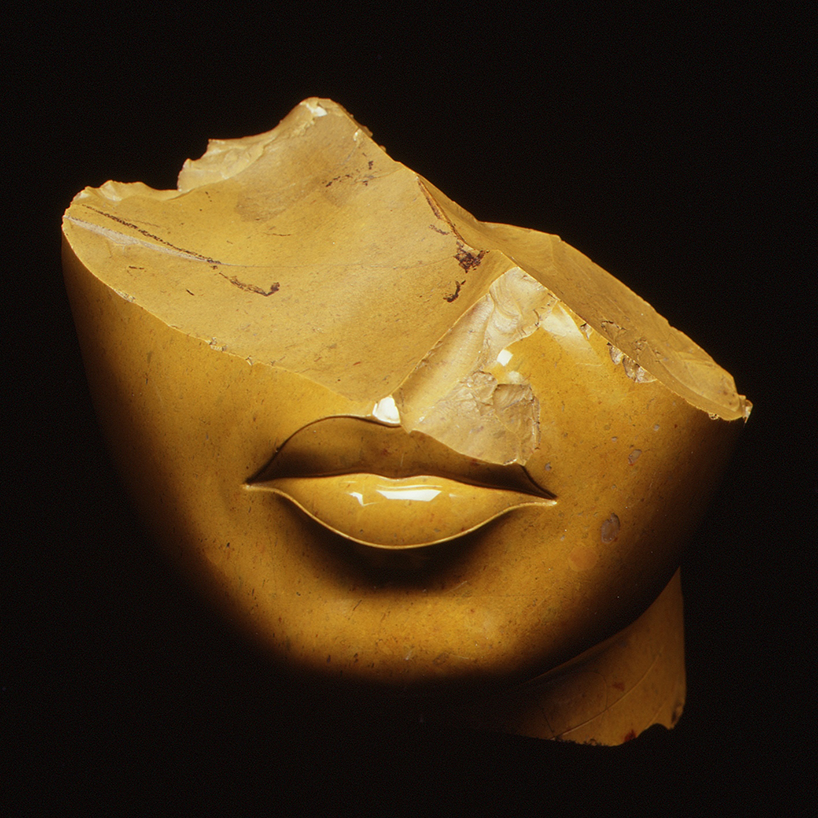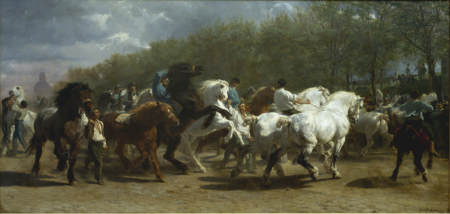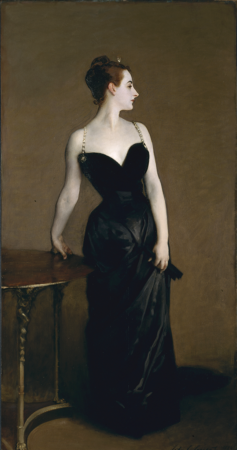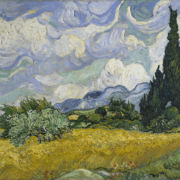The boundless treasures of The Met: 375,000 public domain images now available through Open Access!

Egyptian, Fragmentary Head of a Queen, 1352-1356 B.C.E. Image provided by The Metropolitan Museum of Art.
Today’s Open Access initiative by the Metropolitan Museum of Art and their generous partnership with Artstor help ensure that these images will reach scholarly audiences in more than 1,700 institutions worldwide. Nancy Minty, Artstor’s Collections Editor, explores some of the Met’s history, the materials in the release, and its implications for future study.
In 1872, the Metropolitan Museum opened its doors in a brownstone on Fifth Ave., which housed its nascent permanent collection of 175 paintings. The New York Evening Mail heralded the moment as the birth of the “royal infant,” and one of the founders William Cullen Bryant struck a redemptive tone in his opening address: “My friends, it is important that we should encounter the temptations to vice in this great and too rapidly growing capital by attractive entertainment of an innocent and improving nature.”1 Salomon van Ruysdael’s Drawing the Eel, 1650s, still a standout from the inaugural collection, typifies the folksy, wholesome imagery that bolstered Bryant’s mission.
Today, nearly 150 years later, The Met is among leaders worldwide with an encyclopedic collection that numbers more than 2 million objects, spanning 17 diverse curatorial departments and 5000 years, from antiquities to photography, and including masterworks in all fields. Its range may be documented by countless juxtapositions of outstanding works from diverse cultures, as for example, an ivory handle from ancient Egypt, Prancing Horse, ca. 1391-1353 B.C.E., an engraving by the German Renaissance artist Dürer, The Little Horse, 1505. and a monumental painting by Rosa Bonheur, The Horse Fair, 1853-55, each depicting horses, albeit of very different stripes.
- Albrecht Dürer, The Little Horse, 1501. Image provided by The Metropolitan Museum of Art.
- Rosa Bonheur, The Horse Fair, 1853-55. Image provided by The Metropolitan Museum of Art.
- Egyptian, Prancing Horse, c. 1391-1353 B.C.E. Image provided by The Metropolitan Museum of Art.
The museum building itself has accrued around 20 successive structures or wings to the nucleus designed by Calvert Vaux in 1880, and it currently occupies more than two million square feet, equal to about 35 football fields (not including Breuer and Cloisters locations). Moreover, in 2016 it welcomed 6.7 million visitors.
Now in an unprecedented step among major American museums, The Met has made a major new foray into the global virtual space by sharing open content for 375,000 images of public domain works in the collection. ITHAKA and Artstor are proud to cooperate in this initiative along with Creative Commons and the Wikimedia Foundation. The implications of this move are significant. As Loic Tallon, the museum’s Chief Digital Officer has framed it “In our digital age, the Museum’s audience is not only the 6.7 million people who visited The Met’s three locations in New York City this past year but also the 3.2 billion internet-connected individuals around the world.”
It is hard to fathom what Bryant and other founders of the museum and its early visitors would make of this. The New York financier J.P. Morgan, president of The Met during the early 20th century, was the collector whose unprecedented ambition and zeal led Americans into a golden age of museum-building. With an eclectic appetite and formidable resources, he amassed a vast private collection – Asian ceramics, paintings, medieval ivories, Egyptian antiquities – that looked forward to the current broad scope of The Met. His most significant gift to the museum was Raphael’s coveted Colonna Altarpiece, ca. 1504, the first work by the artist to enter the collection in 1916, along with hundreds of other works. Perhaps Morgan, more than any other founder, would grasp the significance of The Met’s mission as an immense repository for works of art representing global cultures.
- John Singer Sargent, Madame X, 1883-84. Image provided by The Metropolitan Museum of Art.
- Unknown (Nigerian) Edo, Court of Benin, Pendant Mask: Iyoba, 16th century. Image provided by The Metropolitan Museum of Art.
Given the range and depth of The Met’s collection, one can choose a theme or a subject in art history and gather a sampling across cultures. In portraiture, a line can be drawn from antiquity through today, and illustrated with highlights: a jasper fragmentary Head of an Egyptian Queen, ca. 1352-36 B.C.E., Memling’s Maria Portinari, ca. 1470, an ivory Pendant Mask depicting the queen mother from the Court of Benin, 16th century, Ingres’ resplendent Princess de Broglie, 1851-53, and Sargent’s formidable Madame X, 1883-84. One could reprise this with countless themes and corresponding highlights from the collection.
The deeper and wider virtual reach of the open access initiative also permits us to inspect the otherwise unviewable – works that are not exhibited in the physical museum. For example, thousands of fragile drawings and manuscripts that have been restricted or unavailable are now exposed to scholars and students. We may now view van Gogh’s Wheat Fields, 1889, alongside a related drawing, 1888, a sculpture with a study, or different states of a print. Further, plentiful detail and alternate views present objects in their entirety, including surfaces and features that are hidden in a conventional exhibition context.
- Vincent van Gogh, Wheat Field with Cypresses, 1889. Image provided by The Metropolitan Museum of Art.
- Vincent van Gogh, Wheat Field, 1888. Image provided by The Metropolitan Museum of Art.
With the potential of open access, the “royal infant” of 1872, having already surpassed all fathomable expectations, is taking on new dimensions and embracing the future. We at ITHAKA and Artstor are honored to participate in this initiative.
– Nancy Minty, Collections Editor, Artstor
1 Calvin Tomkins. Merchants and Masterpieces: The Story of the Metropolitan Museum of Art. New York, 1970, p. 30.
Related blog posts about The Met’s new image policy can be found on Digital Underground and Now at the Met.
From JSTOR:
Baetjer, Katharine. “Buying Pictures for New York: The Founding Purchase of 1871.” Metropolitan Museum Journal 39 (2004): 13-245. https://www.jstor.org/stable/40034606
Hartley, Julian. “Museums and the Symbolic Capital of Social Media Space.” In Engaging Heritage, Engaging Communities, edited by Onciul Bryony, Stefano Michelle L., and Hawke Stephanie, 189-204. Woodbridge, Suffolk, UK; Rochester, NY, USA: Boydell and Brewer, 2017. https://www.jstor.org/stable/10.7722/j.ctt1kgqvrc.20.
Heckscher, Morrison H. “The Metropolitan Museum of Art: An Architectural History.” The Metropolitan Museum of Art Bulletin 53, no. 1 (1995): 1-80 : https://www.jstor.org/stable/3259465






